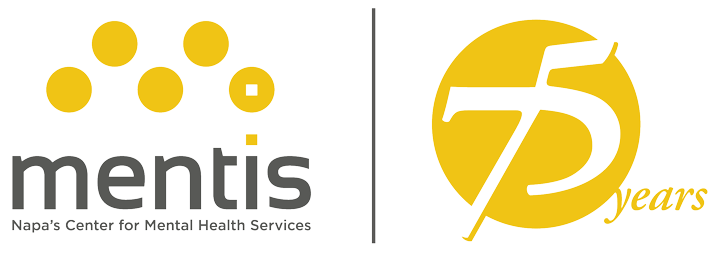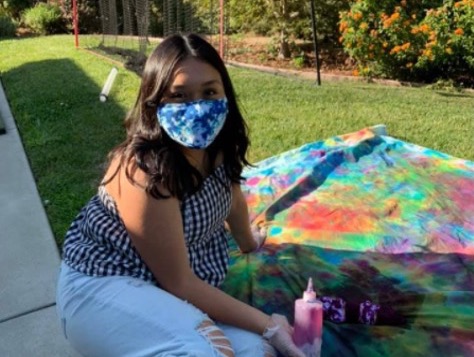North Bay Business Journal
January 11, 2021
While a vaccine may someday offer promise of easing the impact of COVID-19 across the North Bay, questions remain about whether the damage done to the mental health of its residents can fully recover after nearly a year in which demand for services spiked and government and nonprofits struggled to respond.
To begin to find solutions to this growing concern, Sonoma County voters last November approved Measure O, a quarter cent sales tax increase expected to raise $25 million over a decade to address mental health and homeless issues.
Backers say the revenue is expected to fund mental health programs such as emergency psychiatric and crisis services unit and related programs (44%); the county’s residential care facility and transitional housing services (22%); mental health services at children’s shelters, at residential care facilities and for permanent supportive housing (18%); behavioral health and homeless services for some 3,000 individuals, leaving 2% for capital funding of the county’s supportive housing pool.
A worrying sign
When the pandemic hit, and many Americans suddenly lost jobs, faced financial pressures, and became isolated, exacerbating emotional and behavioral symptoms.
In a poll conducted from March 25 through May 30, 2020, Kaiser Family Foundation reported about 45% of Americans were said the virus and pandemic were having a negative effect on their mental health.
Likewise, a June 29 McKinsey & Company survey found that 25% of respondents reported binge drinking, 20% said they were taking prescription drugs for nonmedical use, and more than 14% reported using illicit drugs.
Across the nation, 25% of adults live with a mental illness (51.5 million in 2019), according to the National Institutes of Health (NIH).
PsychStrategies
PsychStrategies General Manager Sara Mitchell said, “We scheduled more appointments in 2020 than in 2019 and regrettably have to turn some people away temporarily.”
With offices in Santa Rosa and Petaluma, in 2019 PsychStrategies’ 36 therapists scheduled over 33,000 sessions seeing children, adolescents, couples and adults. In 2020, the organization scheduled 34,123 sessions by year-end.
“We are seeing a greater need for mental health care, especially among youth ages 14 to 17 at home doing distance learning. They are frustrated, experiencing a lack of social interaction and feelings of hopelessness.”
PsychStrategies works with most major insurance companies which can defray counseling costs with small copays. Without such plans, Mitchell said the rate can range from $140 and $160 per session. However, some insurance companies are waiving copays for telehealth sessions during the COVID-19 crisis.
“Our clinicians are working hard. We’re doing a lot more sessions via telehealth with only a handful being seen in our offices,” said Mitchell. “We don’t want to put people on a wait list. Instead, we advise them to call back to see if there are openings. We are working on offering group therapy via telehealth.”
She said a number of business-related and public Employee Assistance Plans (EAP) offer from 3 to 10 weekly counseling sessions or enable workers to get free sessions from some providers. Without financial aid, after 10 weekly sessions, many clients may not return for therapy. PsychStrategies is also offering a Mindful Meditation Group via Zoom to help clients cope with anxieties and reduce stress.
Youth mental health concerns
Social-learning network StuDocu polled over 1,600 students between March 24 and April 17 and found that 62.4% of Gen Zers said isolating during COVID-19 has worsened their mental health. The top emotions for those polled were stress, frustration, anxiety, and loneliness. Only 18.5% reported that they often feel happy during the pandemic.
According to the National Survey on Drug Use and Health (NSDUG) by the U.S. Department of Health and Human Services over a five-year period, nearly 1 in 3 high-school youth reported feeling sad or hopeless almost every day for 2 or more weeks. High school girls who seriously considered suicide in the past year increased by 34%, and 56% more young people experienced major depression over the last 5 years.
Based on a new study by three University of Cincinnati researchers working with NSDUG data covering the period 2015 to 2018, they reported an increase of 16% among those having suicidal thoughts, a rise of 18.6% among those planning to take their lives and an increase of 11.6% among those attempting suicide.
In 2018 the Centers for Disease Control found that suicide is the 2nd-leading cause of death for those ages 10–24. The CDC also revealed that 1 in 6 U.S. youth ages 6–17 experience a mental health disorder each year.
Mentis in Napa
Robert Weiss, LCSW, executive director of Mentis, cited a rapid surge in demand for counseling conducted online or by phone by a staff of 35 people.
“People are on edge and many are still struggling with trauma caused by wildfires and home losses. We also witnessed a steady rise among those seeking counseling before the pandemic. Since 2017, there has been a continuous uptick in service requests,” said Weiss. “We work with clients in their homes, offer prevention services and provide outreach education while linking with other service networks.”
Mentis offers services to youth, adults and older adults, including onsite at schools. It faces challenges in maintaining funding that allows for a consistent presence in the schools as school districts are also struggling with budgetary shortfalls.
This agency receives a portion of proceeds from the annual Napa Valley Vintners Wine Auction enabling it to fund counseling services for winery workers as well as other lower income county residents.
It has formed mental health partnerships with Queen of the Valley Hospital, St. Helena Hospital, and Ole Health. It also obtains grants from foundations and private donors to subsidize care for community members that could otherwise not afford treatment. Due to the COVID-19 pandemic, this agency is also waiving co-pays for those uninsured, since some people out of work cannot afford even a five-or-ten-dollar copay.
Workplace wellness trends
According to the International Foundation of Employee Benefit Plans (IFEBP), the share of businesses and organizations in the U.S. that provide mental health coverage to employees has increased substantially since 2014. The 2020 survey of over 500 organizations found that the number of entities providing mental health care increased from 69% in 2014 to 87% this year.
Nearly all (97%) of these organizations offer one or more mental and behavioral health focused wellness benefits, making this service the most widely available benefit among all categories and across all sectors.
The IFEBP reported that nearly 3 in 10 U.S. organizations (28%) cite mental and behavioral health as one of their costliest health care conditions — up significantly from 15% reported in 2012.
The foundation’s Workplace Wellness Report indicated that 68% of organizations polled plan to maintain or increase their emphasis on mental/behavioral health over the next two years.
An IFEBP COVID-19 Employee Benefit Survey showed that more employers are recognizing mental health as a serious concern, and 12% of firms have added telepsychiatry so employees can access virtual services.
Overall, 88% of employers surveyed have telehealth services in place, and since the pandemic 10% more employers have implemented this virtual service or are considering adding telehealth to their benefits list. At the same time, 49% of employers have eliminated cost-sharing during the health crisis and 2% have eliminated matching contributions.
Sonoma County educators’ response
“Sonoma County has a current mental health obligation and Measure O is a supplement. However, there is no existing program supporting mental and behavioral health to augment what the Sonoma County Office of Education (SCOE) spends for our schools,” said Steven Herrington, Ph.D, superintendent of public schools in a county with 70,000 K-through-high school students.
“A series of major disasters, causing power shutoffs and cancelling classes, have severely impacted education and students’ ability to learn. The largest group of advocates for Measure O included parents and school personnel.”
He said about 4 years ago Sonoma County had health and intervention counselors in schools. Other counties, such as Solano, continue to have public school mental health counselors. As a result, he said, “We are seeing evidence of poor academic performance and low achievement leading to failed courses at a level double that from a year ago.
“It’s difficult for many students to focus on schoolwork at home, especially with siblings present. We’re still working with an old model while having to address new realities. We need is a modified model that includes designated funding for more integrated mental health school programs, with an eye toward prevention rather than being reactive, along with an oversight commission appointed by the board of supervisors to work with school district boards to make this happen.”
In a May 2020, Dr. Herrington and Dr. Frank Chong, president of Santa Rosa Junior College (SRJC), and other education leaders convened an emergency summit to uncover the factors leading to failing grades, heighten anxiety and widespread student mental health concerns.
A survey was conducted by YouthTruth involving more than 5,000 Sonoma County high school students with 71% reporting “feeling anxious about their future” due to disruptions in their lives was the number one barrier to distance learning.
YouthTruth conducts surveys of high school students across California and the nation, and this finding was unique to Sonoma County. Looking at over 20,000 students across 20 other school systems (in CA and across 8 other states). The survey also found that student fears were further compounded by “distractions at home.”
A separate elementary and middle school convening to address learning issues in those grades will take place in early 2021.
With 1,000 SRJC students displaced when their homes burned in the Tubbs fire, Kaiser Permanente recently stepped up with a million-dollar endowment grant to help build affordable student housing on campus for fire victims and those with low incomes.
Local government support
Former Sonoma County District 3 Supervisor Shirlee Zane advocated for passage of Measure O. “It’s important to restore those things taken away from the former peer student counseling program. Federal and state governments have not adequately supported mental health or kept up with the need. We have had to scramble at the local level to fill this gap.”
She said Sonoma County’s Employee Assistance Plan helps in crisis situations, by connecting county employees and their families with therapists.
For residents, Zane said the county’s Mental Health Warm Line, established at the beginning of the COVID pandemic, operates seven days a week from 10:00 a.m. to 7:00 p.m. and has licensed therapists providing counseling and referrals in both English and Spanish free of charge for county residents. For information call 707-565-2652.
In addition, the federally funded California Hope Program also provides hourlong telehealth counseling for a fee per session and offers needs-based scholarships and assistance programs. For information, call 800-704-8068, or 707-608-8805 in Santa Rosa.
Zane noted that more services and cost-effective approaches are needed. “We’re seeing an increase in homelessness with more individuals in jails with severe mental illness. While progress has been made in reducing the incidence of some disease categories, such as heart disease and colon cancer, we have seen a rise in suicides. One of the best things about Measure O is that not a single dollar goes into the general fund.”
North Bay Business Journal, Gary Quackenbush, January 11, 2021


